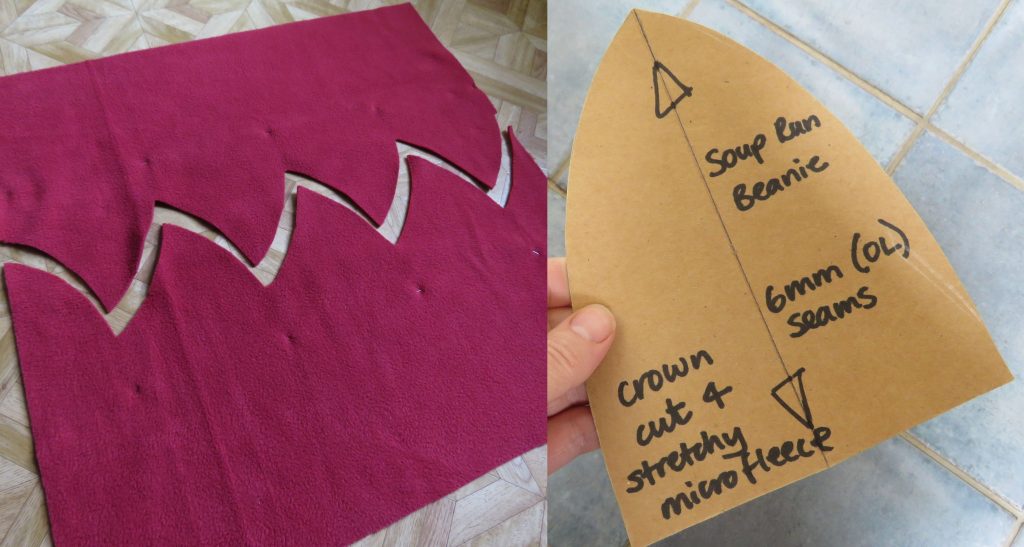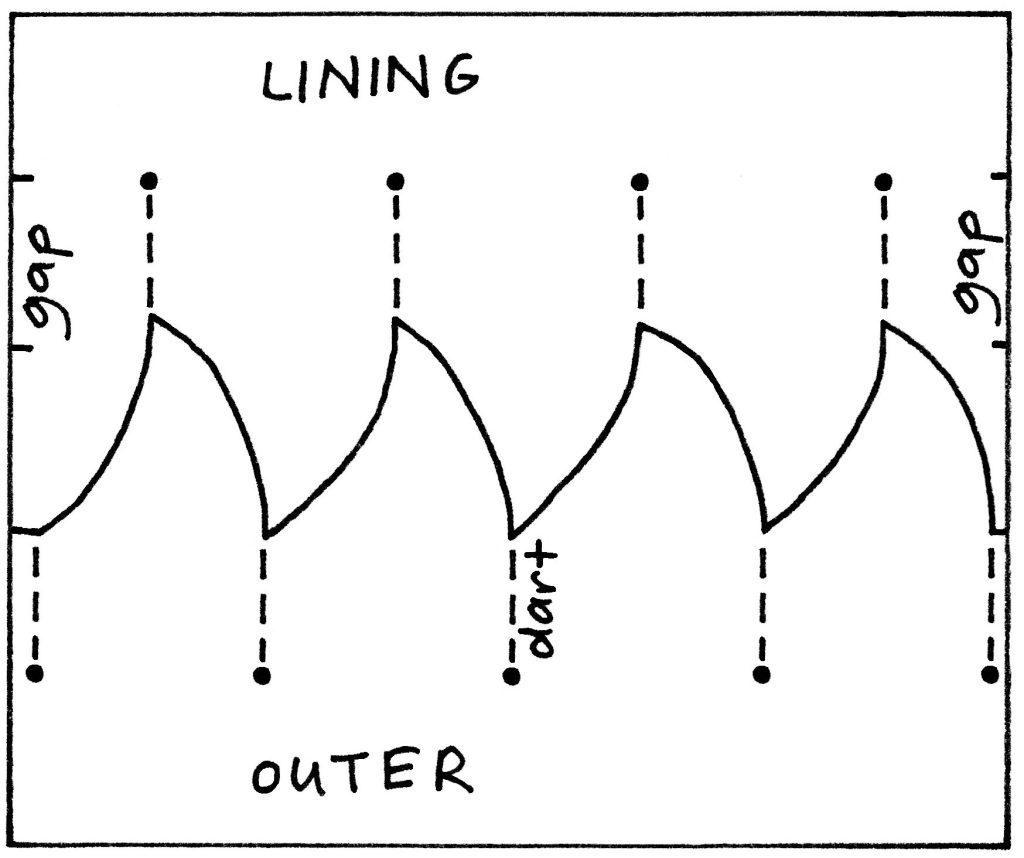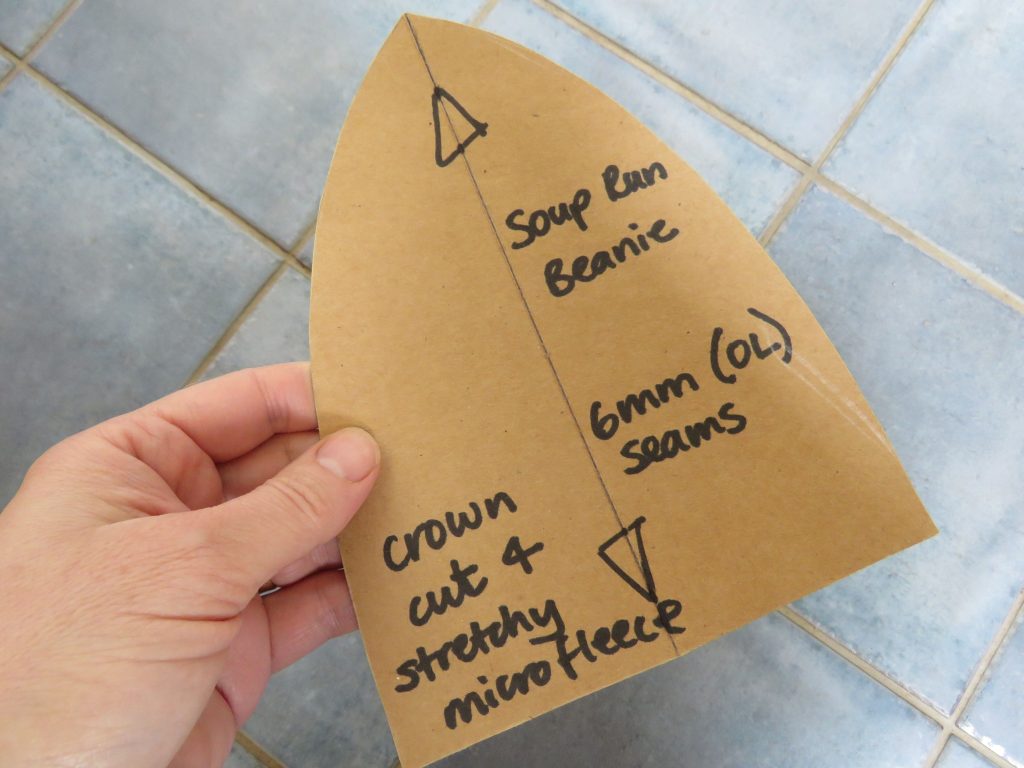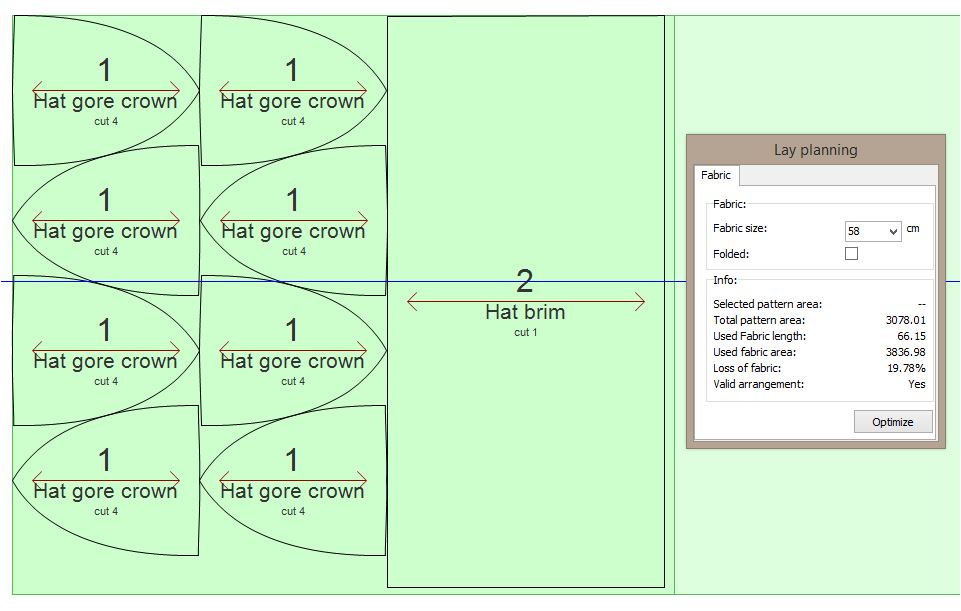Curiosity and the Two Hats

(or the boring title: An analysis of textile wastage and yield: a case study comparison of two head coverings.)
Lately I wondered how much of a fabric saving the zero waste warm hat delivers, compared to a conventional pattern.
The zero waste warm hat is a new pattern, and the culmination of 18 months of trying to make a sewn hat that’s zero waste. The hat pattern is in my shop and still has 25% off until early next month.
I did a similar exercise last year, comparing two blouse patterns, and was surprised at the result – even with weighing the odds against the zero waste pattern.
The zero waste pattern


The hat is lined with itself, and the pattern pieces interlock to form a rectangle.
The conventional pattern
I have a conventional beanie pattern I made years ago.

The Soup Run was a hot meal service for homeless people run by an inner city church; they also gave out warm clothes in winter.
It’s important to compare like with like, and these two patterns are the same size, both with a 4-gore crown, and both with a double layer fold-up. The zero waste hat has a double layer crown, so we’ll do the same with the conventional one.

So the fabric difference is 3031.6cm (zw) vs 3836.98cm (conventional) = a 20.9% saving for the zero waste pattern.
Now let’s calculate the conventional pattern’s crown and brim separately, which will give a lower % because there won’t be waste at the side of the crown pieces:


Adding the crown and brim together = 3701.21cm, giving a smaller yet still significant saving of 18% if you used the zero waste pattern. (Interesting: this is the same % saving as the blouse comparison.)
To extend this 18% saving to multiple hats:
- For every 100 hats you cut with the conventional pattern, you could get 22 more hats using the zero waste one.
- For every 5 zero waste hats you cut, you’re getting slightly more than one “free” one, fabric-wise.
- If you use the conventional pattern which has around 20% waste, and bought 100 metres of fabric to make hats, you’d be throwing 20m away.
- If you bought 100 rolls of fabric, 20 of them would end up in landfill.
There are considerable savings to be had, not just with the fabric bill, but associated cost such as less freight and less rubbish removal costs for scraps.
In spite of the fabric differences, I can see some pros and cons with both patterns.
The conventional pattern would be useful if you’re sewing at home and have odd bits and pieces of fabric to use up, because the smaller pieces can be fitted onto scraps.
The zero waste one would be the most economical one to use if you’re making many hats using meterage. Using a factory cutting machine to cut a high number of hats would be impossible given the tight angles of the pattern pieces, however, it’s easy enough to cut out using scissors for a single hat, a factory cutting machine for a low number, or a laser cutter for a high number.
Both patterns take about the same amount of time to sew. The zero waste one is quicker to cut out (although trickier) due to the shared lines. The patternmaking time was a lot longer for the zero waste hat, but you only have to make the pattern once; once you have a pattern it can be used to make any number of units.
Cheers!
Oh these kinds of posts bring joy to my nerdy heart. Absolutely fascinating.
I’m so glad – I was worried it was too “math-sy” 🙂
That was really interesting, even if I can’t double check your math
Thanks Laurinda, it was really interesting to do – I knew the zero waste one would be more economical, but I had no idea how much.
THAT was fascinating! Every 5 hats equals 1+ free one! Amazing. I love it. ❤️
It’s quite a significant difference, isn’t it?
oh very impressive.
Cheers, Hann 🙂